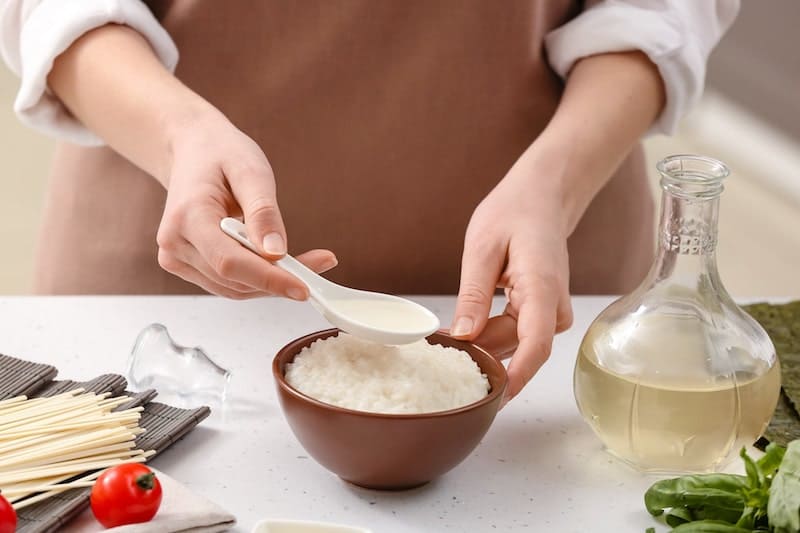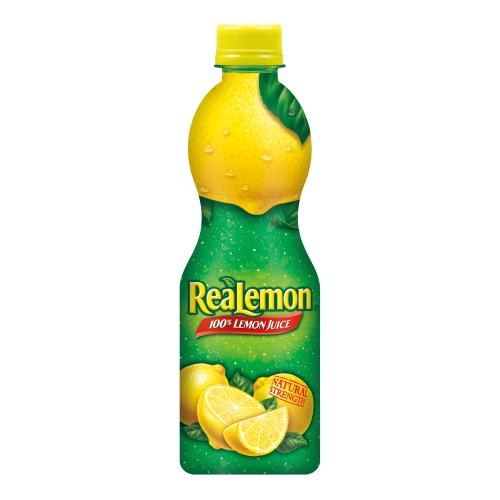Why Does Sushi Rice Need Vinegar? (Solved!)
Long before sushi became the dish we all recognize and enjoy today, the Japanese salted their fish and buried it in rice to preserve it.
However, they eventually realized that adding vinegar to the rice would speed up the fermentation process and prevent bacteria from growing, while making the fish taste better. And with that discovery, sushi was born.
Even though the traditional Japanese dish has always been made in a particular way, have you ever wondered why sushi rice needs vinegar? Vinegar helps in the preservation and freshness of the sushi, helps to make sushi rice sticky, and contributes to the overall flavor of sushi.
Read on to learn more. I’ll discuss the need for vinegar in sushi rice, what can be used instead without completely changing its delicious, unique taste.

What Is Sushi Vinegar For?
Sushi rice is defined by how well it’s seasoned. Vinegar plays a significant role in perfecting the flavor. Sushi vinegar or rice vinegar is added to the rice to create sushi rice.
Sushi vinegar is rice vinegar, pre-mixed with sake, sugar, salt, and flavor enhancers, ready to add to the rice straight away and make the process a little easier.
The sour, salty, and sweet flavor that sushi vinegar adds gives it that signature taste and a refreshing flavor that complements the fillings. It also helps keep the fillings fresh.
Is Rice Vinegar Necessary for Sushi?
When making traditional Japanese sushi, rice preparation is the most important thing – even more than the fillings. So, Japanese chefs undergo extensive training to learn how to get it right before moving onto the fish and seafood prep.
Since rice is such an integral part of sushi, traditionalists believe that rice vinegar better complements sushi rice more than any other.
Its taste is not unpleasantly sharp, and its finish is relatively smooth; these characteristics give it the edge.
In addition, it essentially causes the minimum possibility of clashing with the taste of the rice itself.
Reasons why sushi rice needs vinegar in the first place include:
Sushi Preservation
Sushi can only stay fresh for a few days. After a while, it will fall apart, turn slimy, and coated in bacteria. The vinegar will help keep it edible for as long as possible.
Help Keep the Flavors Intact
When the vinegar is mixed into the rice, it becomes sticky, which helps to infuse all the seasonings and keeps it on the rice.
Fun Fact: Rice vinegar is produced through fermenting the rice starch and adding small amounts of rice wine to convert the sugars into alcohol, then into acetic acid bacteria called Mycoderma aceti. This type is known as the mother of all vinegar.
Can I Make Sushi Without Vinegar?
The word ‘sushi’ derives from ‘su-me-shi,’ but later, the ‘me’ was dropped. ‘Su’ means vinegar, and ‘shi’ means rice; other translations include ‘sour rice,’ ‘sour flavor,’ or ‘sour-tasting.’
The vinegary flavoring of the rice is essentially the heart of the dish; without vinegar, the dish isn’t traditional Japanese sushi.
However, it’s not against the law to change things around a bit.
If you want to use the fresh fish and seafood with flavored rice in a roll to create your version of sushi, white wine or lemon or lime juice can be substituted for the vinegar.
Then, just add sugar, salt, and any other seasonings you care for to create your spin on sushi.
What Can I Use if I Don’t Have Rice Vinegar for Sushi?
No rice vinegar? No worries because there are plenty of alternatives you can use that are probably sitting in your pantry as we speak.
Let’s get into the perfect substitute ingredients for rice vinegar to make sushi.
White Vinegar
White vinegar or distilled white vinegar shares a similar flavor profile to rice vinegar, therefore, offers the same intensity. As a result, it’ll add a kick to your sushi rice while maintaining the familiar sushi taste.
Apple Cider Vinegar
ACV is essentially fermented crushed apples. It has a slightly sweet, mild flavor with a hint of apple notes, suitable for achieving your unique sushi flavor. Like with making sushi, you’ll probably need to experiment by making a few batches to practice getting the taste of the portions right.
Lemon or Lime Juice
Lemon and lime juice can be used in any recipe requiring rice vinegar, as they simulate the acidity of rice vinegar. Though a delicious substitute, bear in mind that your sushi may have a distinct citrus taste. You can use either store-bought lemon or lime juice or freshly squeezed.
White Wine Vinegar
White wine vinegar is white wine fermented and oxidized into an acidic and lightly fruity flavor.
Some people prefer the reduced sourness and flavorful taste of white wine as opposed to rice vinegar.
Champagne Vinegar
Champagne vinegar is essentially fermented sparkling wine. Its crisp, light, and delicate flavor make it an excellent rice vinegar substitute. It helps to preserve the sushi form and make the rice taste a little sweeter. In addition, its mild taste provides a subtle flavor that won’t overpower your dish.
White Balsamic Vinegar
The grape sugars are not caramelized when creating white balsamic vinegar, giving it a lighter color and flavor than dark balsamic vinegar. It adds a clean, sweet, low-acidic flavor to your rice.
In Summary
Sushi became popular when the Japanese used rice with vinegar to preserve their fresh fish and seafood. Later the process was tweaked slightly and became a healthy dish enjoyed worldwide.
Many sushi chefs prefer to use sushi or rice vinegar to prepare their sushi rice, but you don’t have to use that particular vinegar as we’ve discovered today. Most other types of vinegar, or using ingredients containing acidities like white wine, lemon, or lime juice, offer a similar taste.
In this article, I’ve explained why sushi rice needs vinegar based on its origins, the benefits to its taste and preservation, and what you can use instead of rice vinegar.
I hope this helped to make things clear and that your sushi tastes just the way you want it to!













